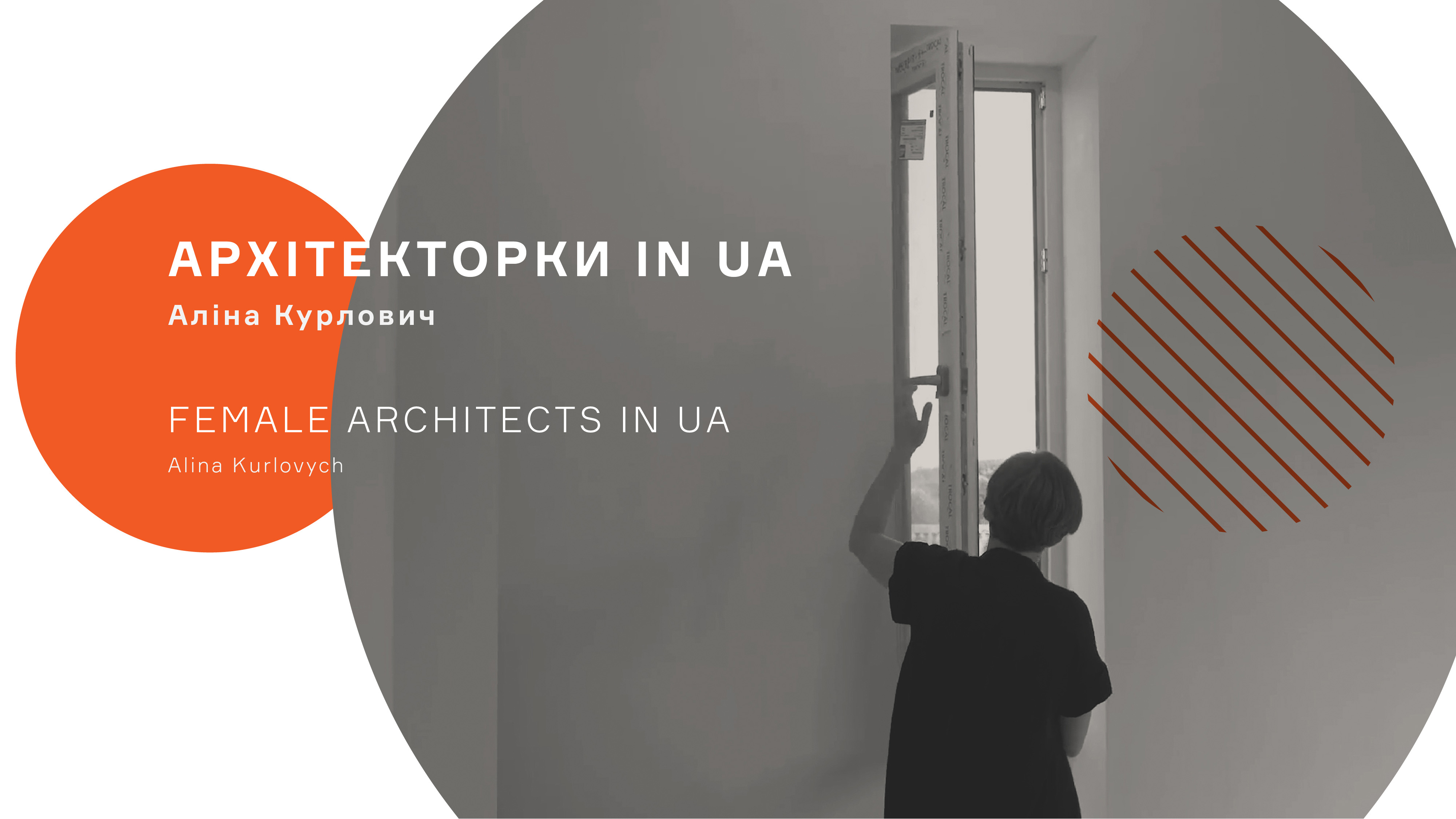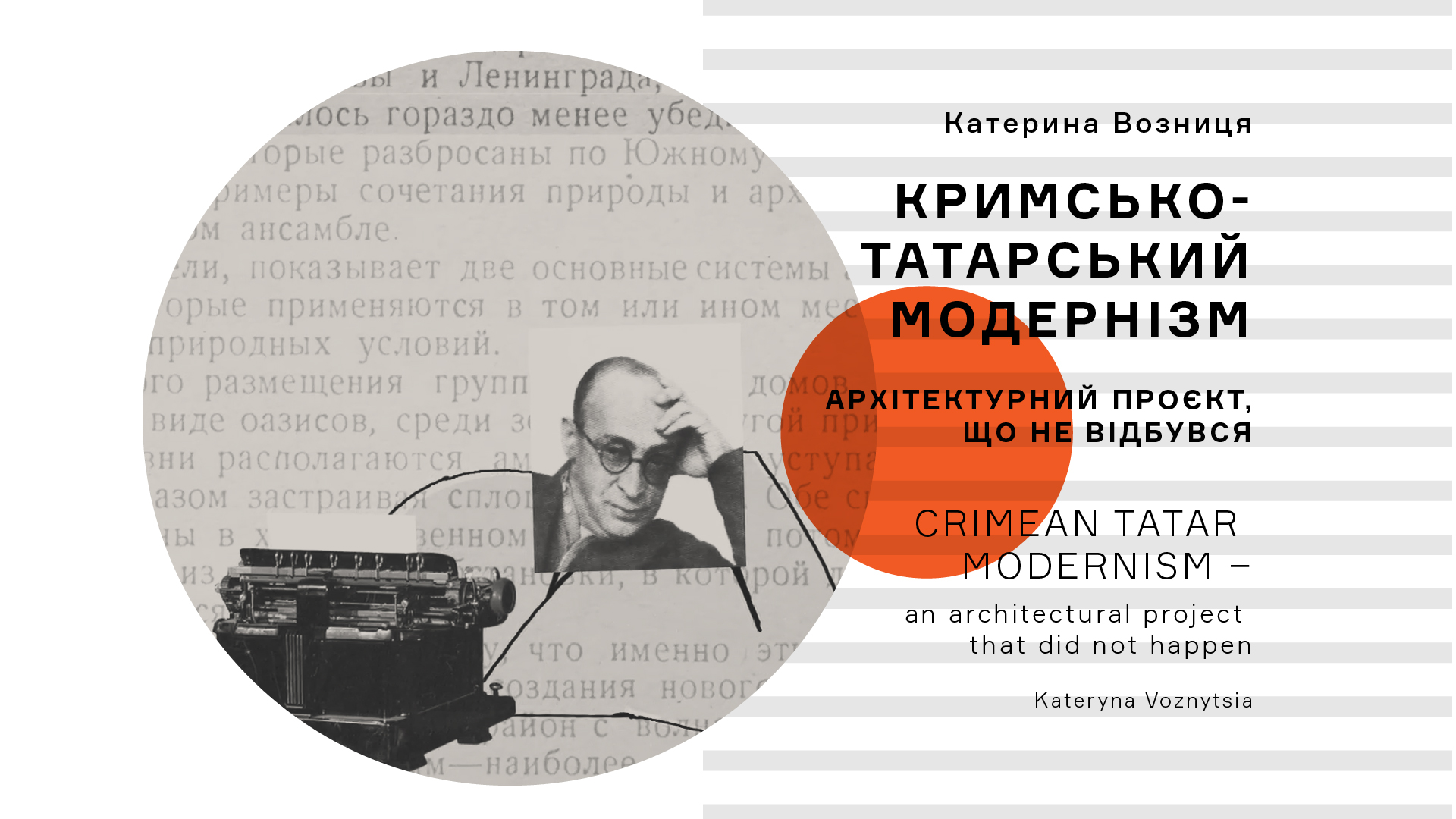As a rule the architectresses represent over 50% of the students and all the time they hear the teachers insisting that they should not design, draw, talk (an so far) like girls do. As “doing like girls” is thought to be a bad thing for sure. Therefore they design not just as well as the men architects do, but they do it better than all the rest. Later however they disappear somewhere. Some go working into a related vocational field, some work in science and education, and some change their profession in a drastic way. This problem exists not only in Ukraine, it is revealed all over the world; that’s why came out “Where'd You Go, Bernadette”, the favorite novel of all architectresses, and only a man architect might not cry over it. However we wanted not to regret the fate of those who have left, but to look at those who have remained and who despite all obstacles continue designing, drawing, speaking and responding the challenges. We offer to take a look at the “alive” architectresses from all over Ukraine, who belong to the one and the same generation, have quite different fates, and who are facing such similar problems. But the main thing is that they are designing, and what is more important – they are building like girls do.
Kateryna Yarova, founder of IK-architects architectural bureau
“Architecture is the very life for me. You need to listen to yourself, but at the same time to hear your customers. After all, we are designing it for them, not building a monument to ourselves”.
Kateryna comes from a family of engineers. Her own path to architectural practice began at her bachelor's degree studies at Kharkiv National University of Construction and Architecture. The teachers submitted her thesis, the project of the Sumsky market in Kharkiv, to the city competition. Her project was recognized as the unchallenged winner, but it appeared not be sufficient. The facility was built upon another project made by some architects close to the city authorities. The loud public disclosure that followed did not help to overcome the injustice. “At the urban-planning council I was told that the little girl is not supposed to design the Sumsky market, that it was the adult men’s business,” Kateryna recalls. Today she’s smiling on remembering this, saying it was then that she realized that architecture is not only art, but also politics, so she could see the real situation in the professional sphere.
The defeat did not deter Kateryna from architectural practice, and soon she founded an independent architectural bureau, IK-architects, which has been operating successfully for eight years already. Her team creates private homes design and their area of expertise is residential and public spaces and HoReCa facilities projects. Kateryna has launched a mobile application for her own architectural project Buywoodhouse using augmented reality technologies (Augmented reality). With its use the customers can see their future home. To do this, you need to download the application onto your phone, scan the horizontal plane, point the camera to the land plot and an object would appear there. The application provides you with an opportunity to see the house layout, its sections, etc.
The architectress is sure that the key to professional success lays in a well-coordinated team of professionals who are able to hear each other while heading to the common goal together. Even the best experts do not guarantee a perfect result if they cannot find a common language. This problem roots in architectural education curriculum, because neither developing your own business nor creating a team, to unite professionals around the idea to implement it effectively are thought in the universities. Moreover, higher education does not provide you with necessary legal knowledge and practical skills. That is why Kateryna has launched a distance learning course for beginners named “Crazy_rabochka” (crazy working drawings), within which she is sharing her knowledge and experience.
Anastasia Gulak, founder of the PORTAL-21 architectural and construction company
“I’m trying not to affect the creative process. In my company, all women are independent and self-subsisting individuals. All of them are professional architectresses. Like Henry Ford, I surrounded myself with smart people, and now it makes my work easier”.
Anastasia's family presents three generations of professional architects, which she is very proud of. Asja (that is her short name in her family circle) initially started working at the Kharkiv Design Institute. However, she realized soon that she didn’t have enough freedom at a state-owned enterprise. That's why she created the architectural and construction company named PORTAL-21. Anastasia recalls that at first they did not have as many clients as she expected, but later the number of projects grew on. For over 10 years, Anastasia has gathered a team consisting exclusively of women. Asja trusts her colleagues completely and she provides them with freedom of creativity, which she once lacked so much. Today it is an exclusively women's architectural bureau, which employs 7 architectresses. The main customers of the company are such organizations as GIZ (Deutsche Gesellschaft für Internationale Zusammenarbeit GmbH) and the Ukrainian Social Investment Fund (UFSI). Together with them the team of architectresses is renovating social infrastructure facilities, hospitals and other medical institutions in Kharkiv, as well as in Kharkiv and Luhansk regions.
Anastasia was the one to be at the origins of the Modernistki movement, launched by the NGO Urban Forms Center. It was from her office that lectures, workshops and seminars were started, which later came up to the international level. Anastasia also has her own brand and official trademark of “architectural” accessories [pa dǝ dø]. On the one hand, in the ornaments she embodies the familiar architectural forms of brutalism and modernism, on the other hand, she explores the depths of intuitive creativity, which opens the way to her own style in architectural practice. With her brand [pa dǝ dø] Anastasia is travelling over European art venues, art biennale, carrying out author's exhibitions, where she represents Ukraine in the contemporary art area.
Hrystia Koliasa, founder of Koliasa Architecture Studio
“The key to a successful project is the cooperation of an architect and a customer. The best objects are those in which you managed to discover the perfect common denominator. It is such a product that we are striving for together”.
Hrystia has always dreamed of running her own company. Two years ago, her project hit the pages of a popular online architectural resource “ArchDailly”. This urged her to found an architectural office of her own after eight years of working for other companies. This is how appeared Koliasa Architecture Studio, which is now building mostly private houses in Ukraine and abroad.
Hrystia has traveled and studied the architecture of different countries for a long time. In addition, she has implemented some projects in Tanzania, Australia and Estonia. The architect considers this an invaluable experience, because it helps her to implement her projects in Ukraine.
Koliasa Architecture Studio sets to ideological projects exclusively. The architectress is straining for harmoniously fitting each of her houses into the context of the area in which it is designed. She also aspires that the residents of the surrounding houses changed their homes under the influence of the objects she implemented. She regards transformations in specialized education to be also incredibly important for the urban environment changes. The studio founder believes that previous generations of teachers sometimes layer Soviet practice onto the present reality, without taking world experience into account. As a result, Ukrainian practicing architects use mostly outdated approaches. Therefore, not only she designs, but she also delivers open workshops and lectures, which are attended by students, architects and all those interested in the issue.
Ani Abrahamyan, architect of “Partner Design” interior design studio
“Architecture is not a kind of job that allows you to finish work and to go home free. It follows you all the time. An idea can come to you any moment. It doesn't matter whether you are visualizing shape of a building or thinking over some tiles colour".
Ani says little about herself, more she talks about architecture, the love for which she “inherited”, because her grandfather is a famous Armenian architect Levon Khachatryan. He was the author of the most popular quarter in Slavutych, Yerevan district. Ani's father also worked on the construction of Slavutych, and her mother, yet being a philologist by profession, has written a lot about architecture (let’s take her book “Cracked paints inventions”). In addition, Ani prefers to work with her husband and her brother. She admits that working with her loved ones is pleasant and comfortable, because you can always count on their support and help.
Ani thinks that it is not her status as an architect she ought to be proud of, but those are the projects she embodies. Today, Ani's main activity is the office space design. Her favorite project is always the one she is implementing right at the moment. Thus, among her recent projects is the design of Smart Prostir (Kozelshchyna), which is located in a historic building, where the team faced a number of cultural heritage preservation challenges. Another current project of hers is the office of the Novy Zir clinic in Kyiv, located in a limited space, so she has to take into account its every detail. All the interiors she has created are as concise and functional as possible.
The architectress emphasizes the importance of a well-coordinated team when working on architectural projects. Here no one is left alone with his problems that arise in the designing process, everyone supports each other, which is especially important in tight deadlines terms. However, Ani admits that the most difficult part of her job is communicating with her customer. After all, when negotiating with clients, you need to endorse your ideas and professionalism constantly. In addition to designing, Ani considers it necessary to promote architecture. Notably, she funded the Brick to brick review, in which she is intelligibly presenting the buildings and the people who create them.
Shaza Musa, KAMA teacher, coordinator of art and cultural projects
“Architecture is not only about commercial projects and author's supervision. I am interested in architectural research, theory, installations, in forming the very discourse of it. Especially in Ukraine”.
Shaza's parents got technical education, however there are many artists and architects, both men and women, among her large Syrian family members. Shaza received her architectural degree at National University “Yuri Kondratyuk Poltava Polytechnic” (2016), and got her master's degree in arts at Dessau International Architecture (2018). But after graduating from the architectural college, she realized that office life does not fit her yet, so she took a different path. Currently Shaza is teaching at KAMA (Kyiv Academy of Media Arts), developing the strategy of the Jump Center of Contemporary Art, pursuing her own research and projects. In the summer, 2020, she became the co-curator of the theoretical-practical conference “Upper Layers of Earth”, within which the artists and art theorists were travelling around Poltava town and were delivering their reports.

































